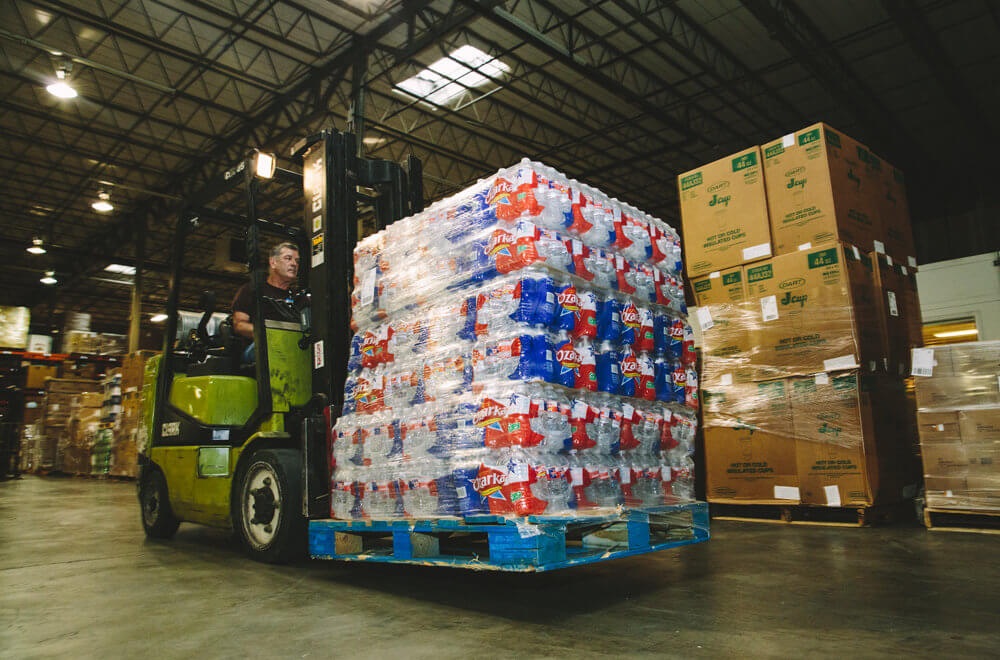
COVID-19 completely changed 11-year-old Julian’s life.
Quarantine orders across the Philippines kept him inside the one-room, dirt-floor home that he shared with five other members of his family. They had no running water and only two beds among them.

“I was anxious for this to be over, to go out and play, see my friends, and go to school,” he said.
When Julian’s mother got sick and his father lost his job laying bricks, Julian felt helpless. Hunger and health concerns loomed; hope seemed out of reach.
Unfortunately, stories like Julian’s are not unique. Families who already struggled were forced deeper into poverty by the pandemic. But Julian’s circumstances began to change for the better when his family received emergency food from Convoy of Hope and he became a participant in the Children’s Feeding program.
As schools open up again — after a year of closed doors or reduced classroom hours — Convoy of Hope doesn’t have to restart its programming. Thanks to volunteers and dedicated team members, Convoy continued to feed more than 387,000 children even when schools were shut down.
Schools Are Critical
When it comes to meeting nutritional needs through its Children’s Feeding program, Convoy of Hope starts with schools.

“We learned early on that if we fed a child at school, the parents would keep that child in school rather than having them scavenge or beg,” said Hal Donaldson, president of Convoy of Hope.
There’s a school in almost every community, and education unlocks potential for a different future.
“If you feed a child at a school, it gives them additional opportunities to one day end the cycle of poverty in their family,” said Heath Adamson of Convoy of Hope’s Global Program.
“I like all the food Convoy is providing for us. It is all tasty. It makes me strong!” said Subira, a 5-year-old girl in Ethiopia. Subira lives with her parents and two siblings. The food she receives at school through Convoy of Hope ensures that she can focus on learning and growing.
Robinson, a student in Haiti, echoed Subira’s sentiment: “The Convoy food helps motivate me to come to school every day and to get good grades. It helps protect me against hunger.”
Jessa used to go to her school in the Philippines while feeling weak and unable to focus. Food insecurity put good grades at the bottom of her to-do list. With more hope and food security, everything changed for Jessa. “I am strong enough to face the trials in my life and to reach what I want,” she said.
Deeper Connections
Feeding children plays an integral role in Convoy’s efforts to make lasting change within a community. Paired with agricultural and empowerment initiatives, feeding children can help guide a community toward sustaining itself.

During 2020, Convoy of Hope worked with local team members, partners, and volunteers to continue feeding children despite school closures. “Feeding 387,000 kids who were part of school-based feeding programs, during a year when schools were closed down, is nothing short of a miracle,” said Adamson.
While addressing food insecurity in many parts of the world, Convoy is not neglecting the food scarcity that children face in the United States. Moving forward with the Children’s Feeding program within the U.S. is the natural next step beyond the Community Events, Rural Initiatives projects, and disaster relief responses that have fed children for years. Most recently, Convoy of Hope’s COVID-19 response provided meals to children who had lost their main source of nutrition during the week at school.
As schools are reopening, children like Julian are getting back to much-desired personal interaction with their teachers and program team. Because he had food during the pandemic, Julian stayed focused on his schoolwork and his dream of becoming a chef. His next goal is to support the rest of his family. “To my brothers and my mother and father, I want to give them what they need,” he said.
Lessons From a Challenging Year
- Feeding 387,000 children through a school-based feeding program during a year when schools were shut down was a miracle. Thankfully for all 387,000 of those children, miracles happened.
- There is no substitute for human interaction.
- The global supply chain is fragile.
- Convoy of Hope must continue to be innovative.
- Volunteers around the world are crucial to the work that Convoy of Hope does.














